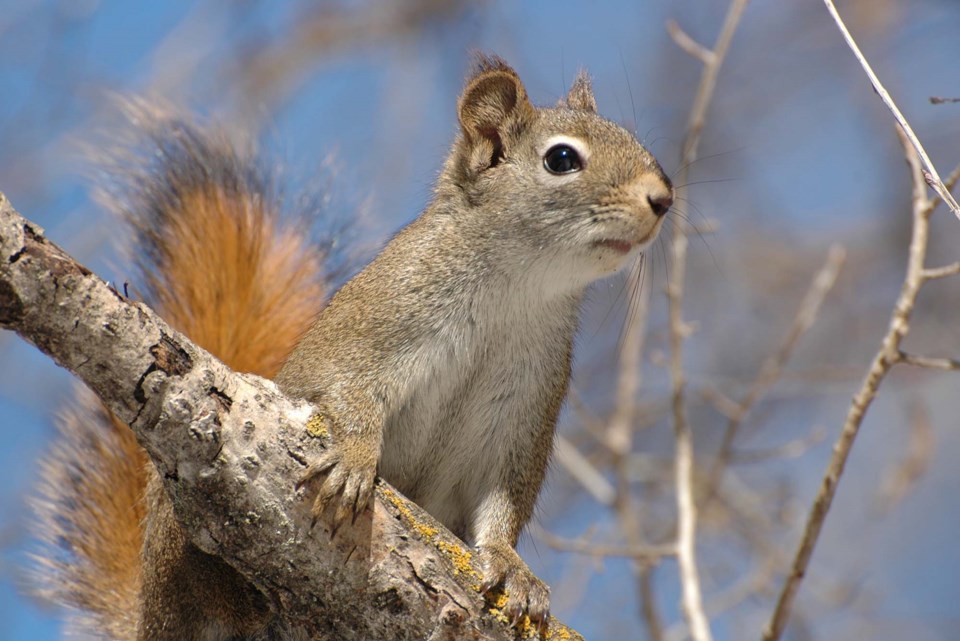St. Albert naturalists who are nuts about squirrels can check out a free talk this Thursday on Alberta squirrels.
MacEwan University biology professor Jessica Haines is giving a free online talk Feb. 8 on the squirrels of Alberta. The talk is part of Nature Alberta’s Nature Network Speaker Series.
Haines, who has studied squirrels for a decade, said her talk will focus on how to identify squirrels and why people should care about them.
Haines said squirrels are an extremely charismatic species, and it seems everyone has a squirrel story to share. Some complain about their pesky behaviours, while others delight when they show up at their bird feeders.
“They have a lot of attitude, a lot of personality, and they really connect people to nature,” Haines said of squirrels.
14 species in Alberta
Squirrels are rodents of the Sciuridae family and related to mice and voles, Haines said. Alberta has 14 species of squirrel, some found only in very specific regions.
The St. Albert region is host to at least five squirrel species and was historically home to a sixth: the Franklin’s ground squirrel, which resembles a Richardson’s ground squirrel (AKA gopher) with a grey head and a long, bushy tail.
“We have no record of them being in this part of our province in decades,” Haines said, and they seem to have vanished from much of Alberta.
Haines said her talk will discuss her research into the disappearance of the Franklin’s ground squirrel and how Albertans can help track them down.
St. Albert residents have undoubtedly seen red squirrels raiding their bird feeders, nesting in their sheds, and scolding them from nearby trees.
“They definitely have a lot to say,” Haines said of red squirrels, and are intensely territorial — hence all the “get off my lawn” chattering toward humans.
Haines said February is mating season for red squirrels, so residents may see them chasing each other or gathered in groups. Lucky viewers might even see squirrel pups, which are born naked (and, as Haines discovered in 2014, occasionally murdered by male squirrels).
Nature lovers probably won’t see any Richardson’s ground squirrels at this time of year, as those squirrels are still hibernating, Haines said. These squirrels are an important food source for other predators, create underground homes for other species, and help turn over soil.
Residents might be surprised to hear that St. Albert has flying squirrels. These big-eyed arboreal creatures have skin flaps between their legs that lets them glide between branches, Haines said.
“They also look super fluffy!”
Flying squirrels are nocturnal, so you’re unlikely to see them unless you stay up late, Haines said. If you do, they’re pretty obvious, especially when they snack at your bird feeder.
The St. Albert region is also host to a few groundhogs/woodchucks, Haines continued. These chunky creatures generally have obvious dens and are often habituated to humans, but are few in number here and hard to find outside of river valleys.
Also hard to spot is the least chipmunk — not because it’s rare, but because it’s so small and fast that you’ll miss it if you blink. Haines said nature lovers might have better luck finding one with their ears — listen for an annoyed, bird-like chirp.
Haines’s talk starts at 7 p.m. Visit naturealberta.ca/squirrels-of-alberta for details.




